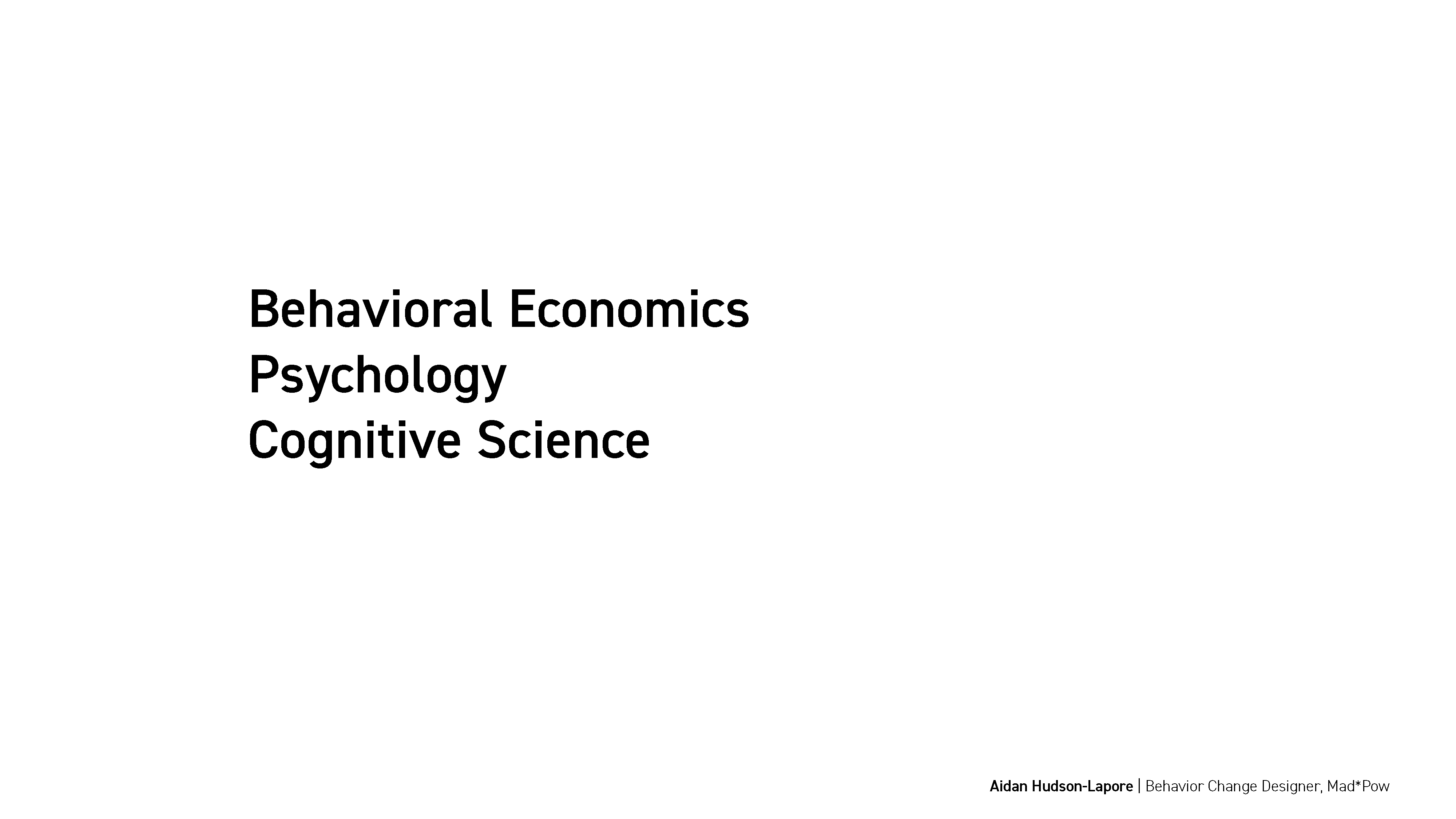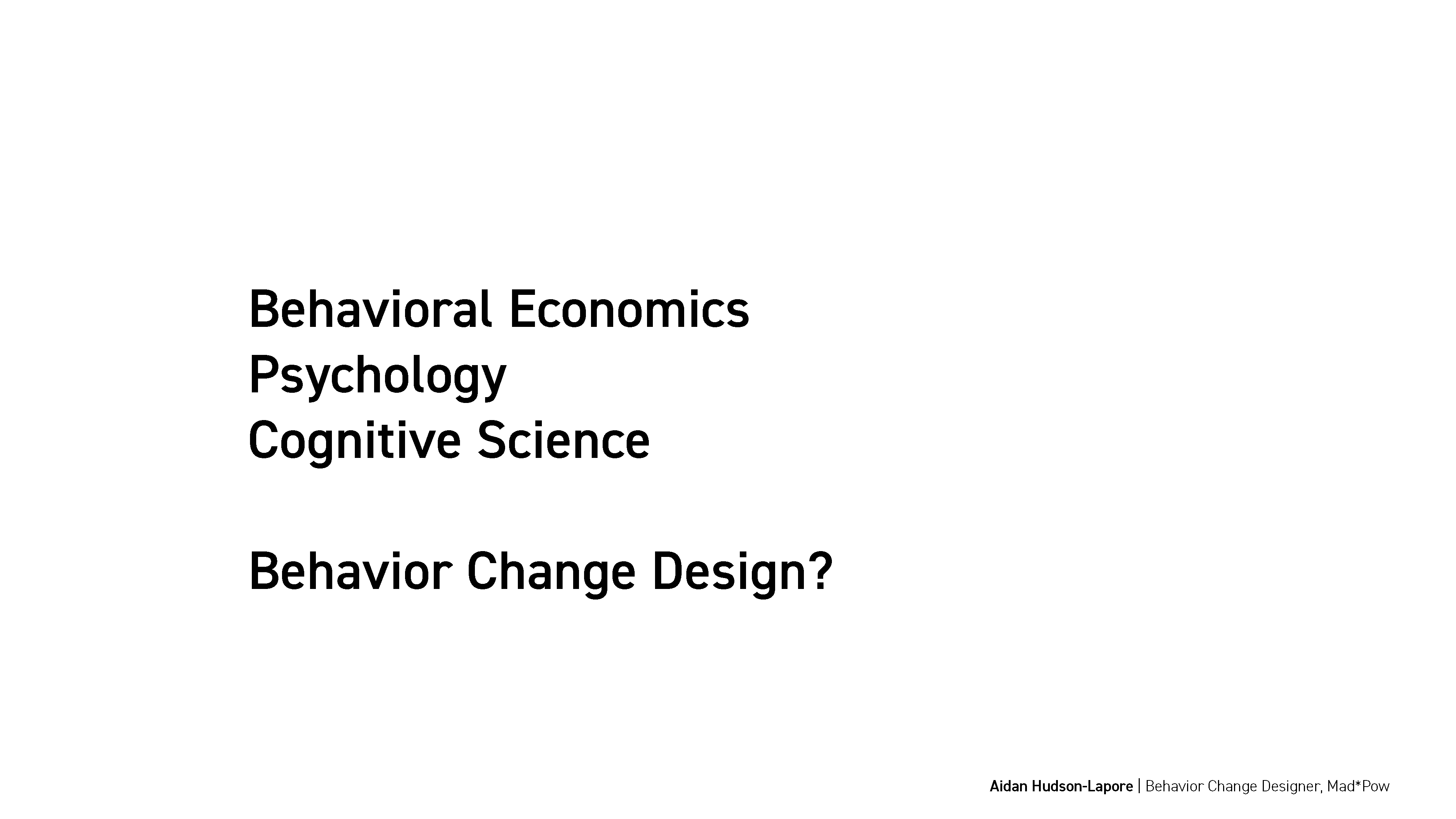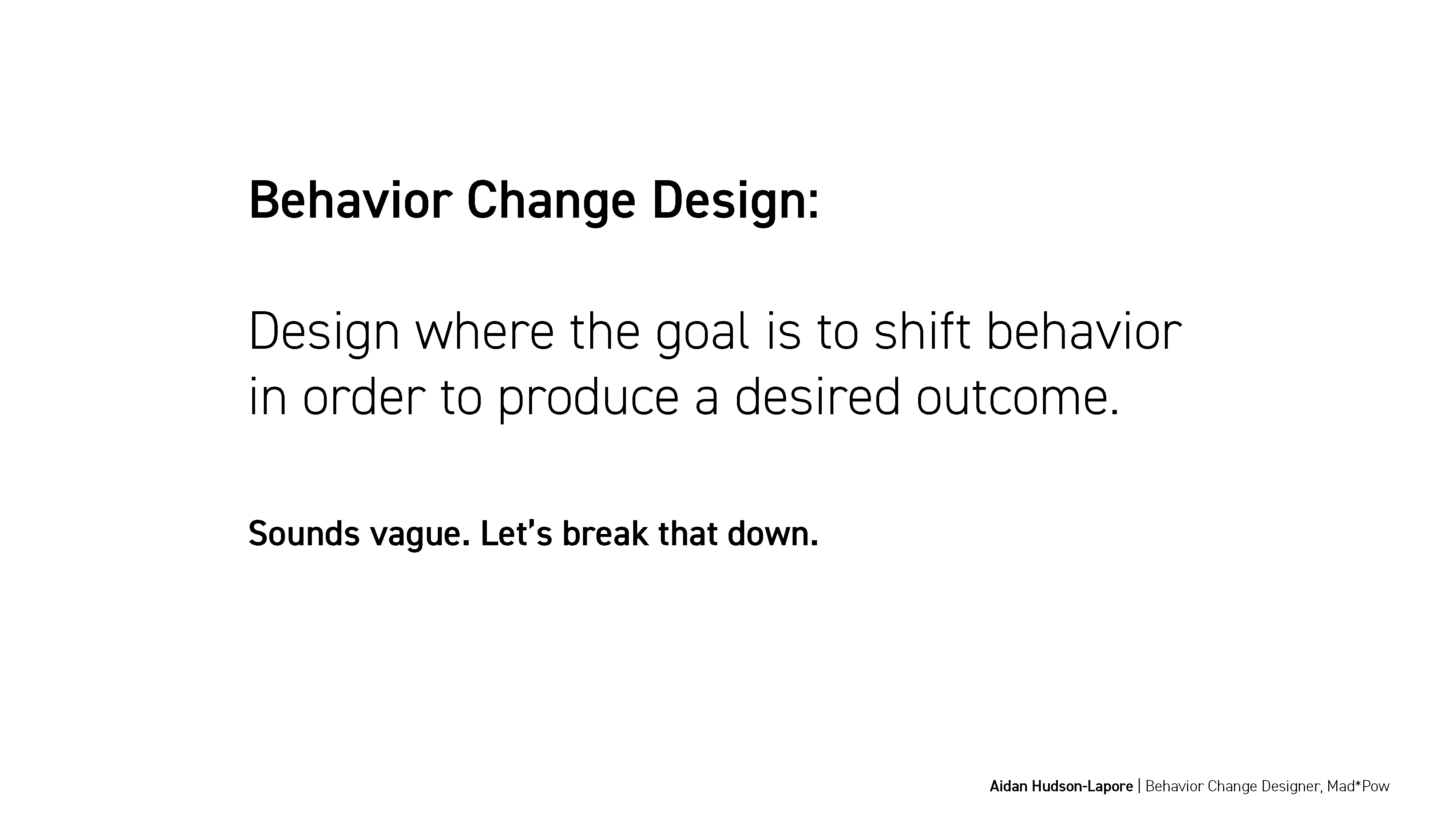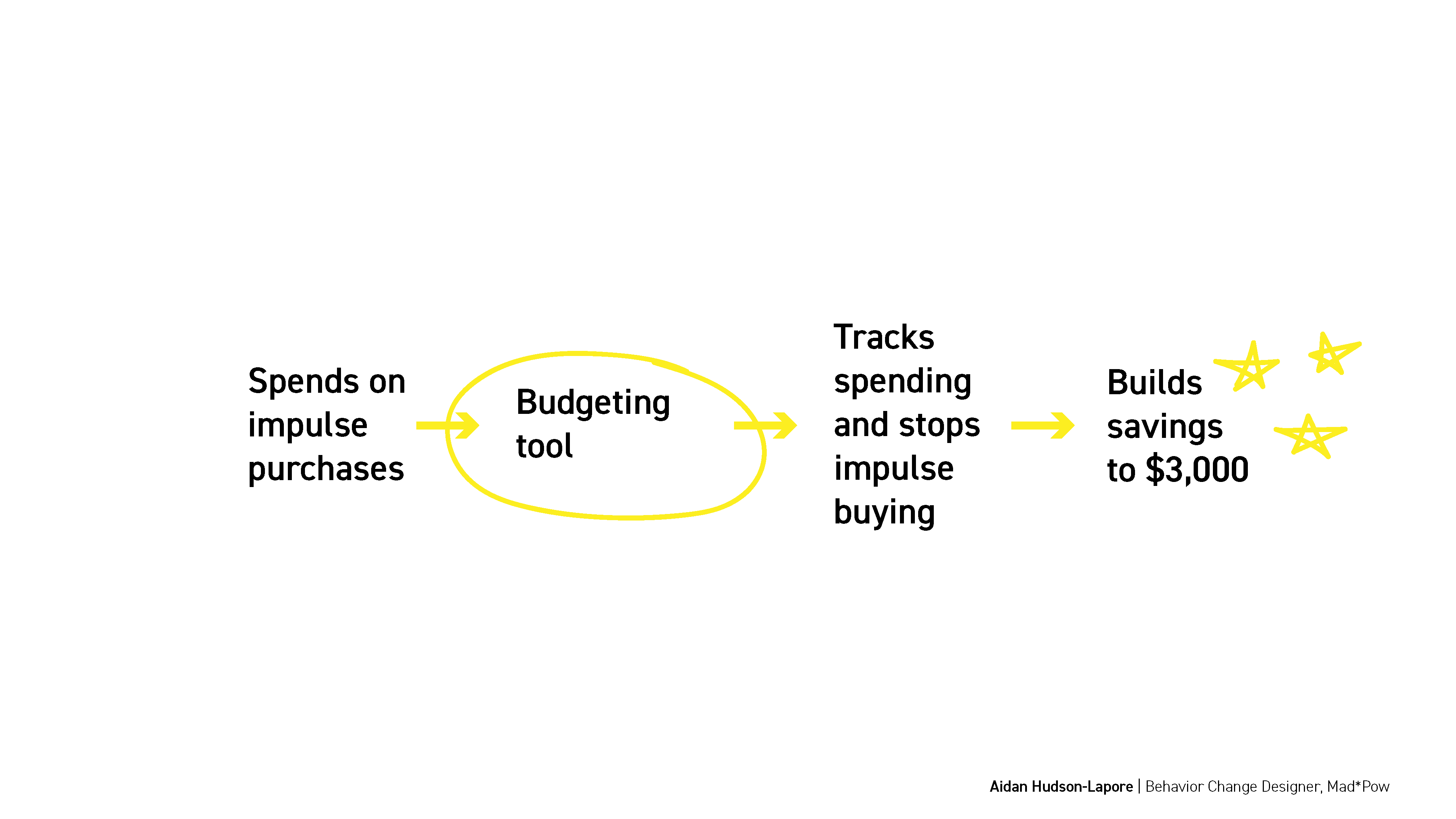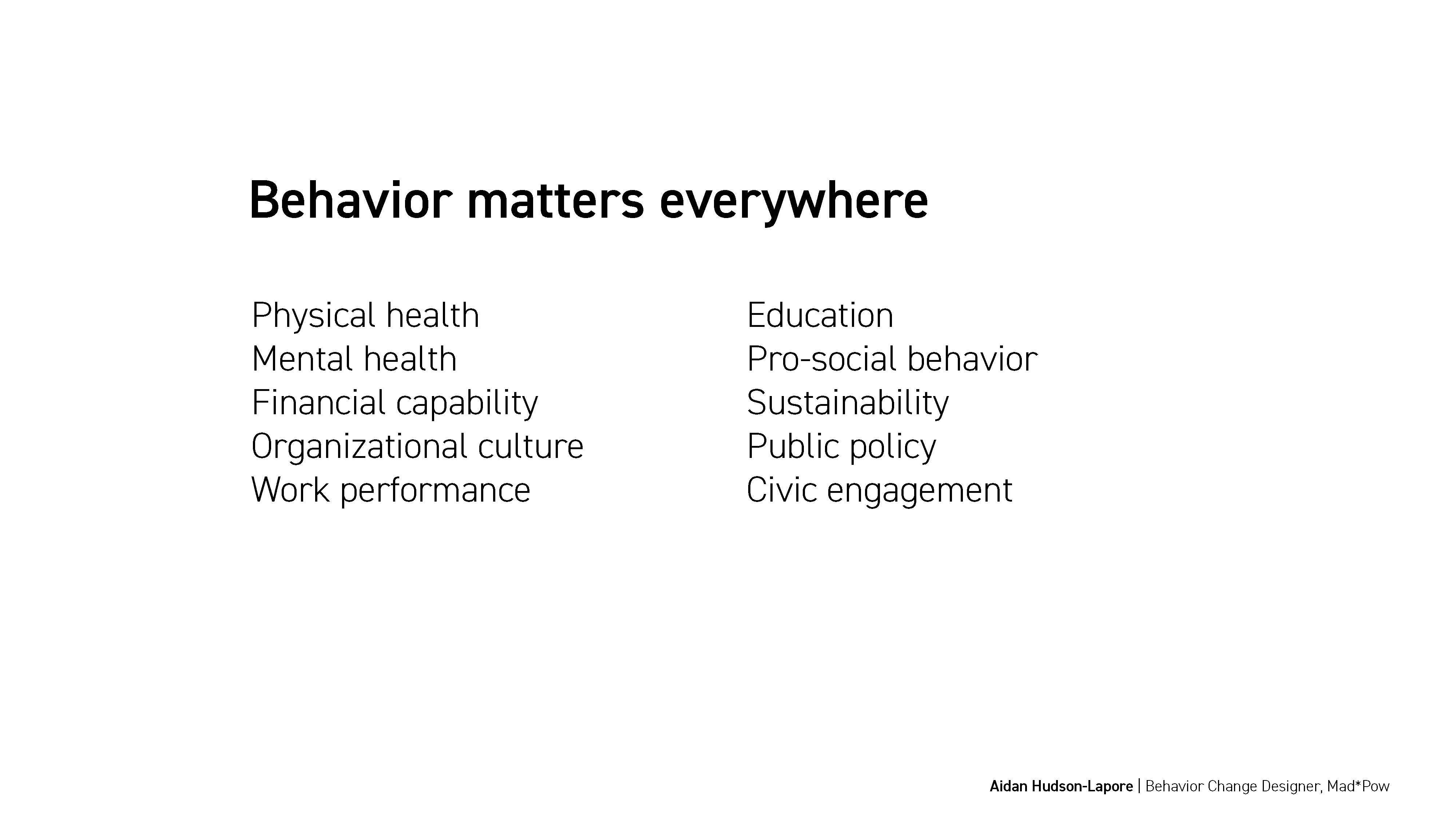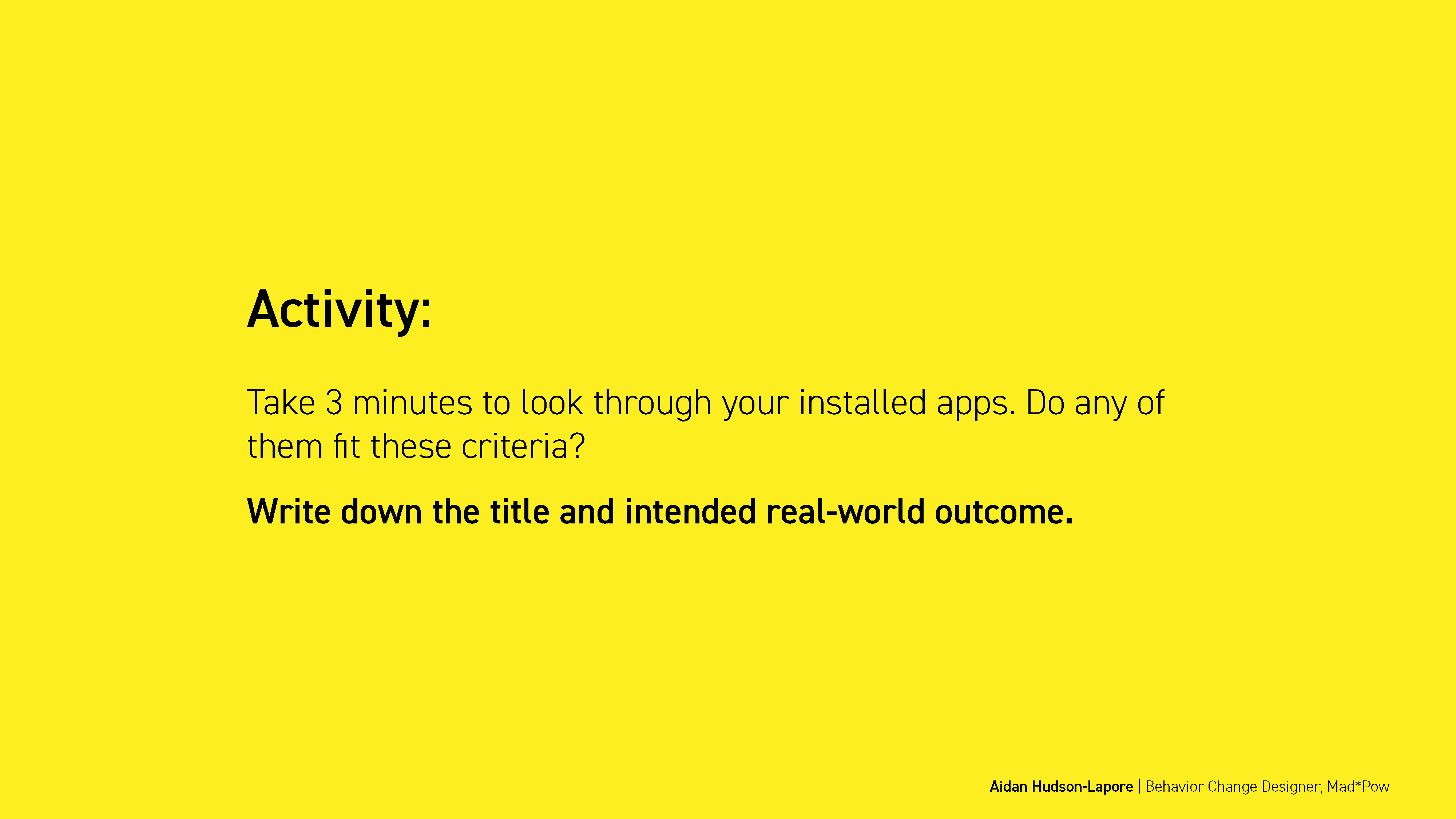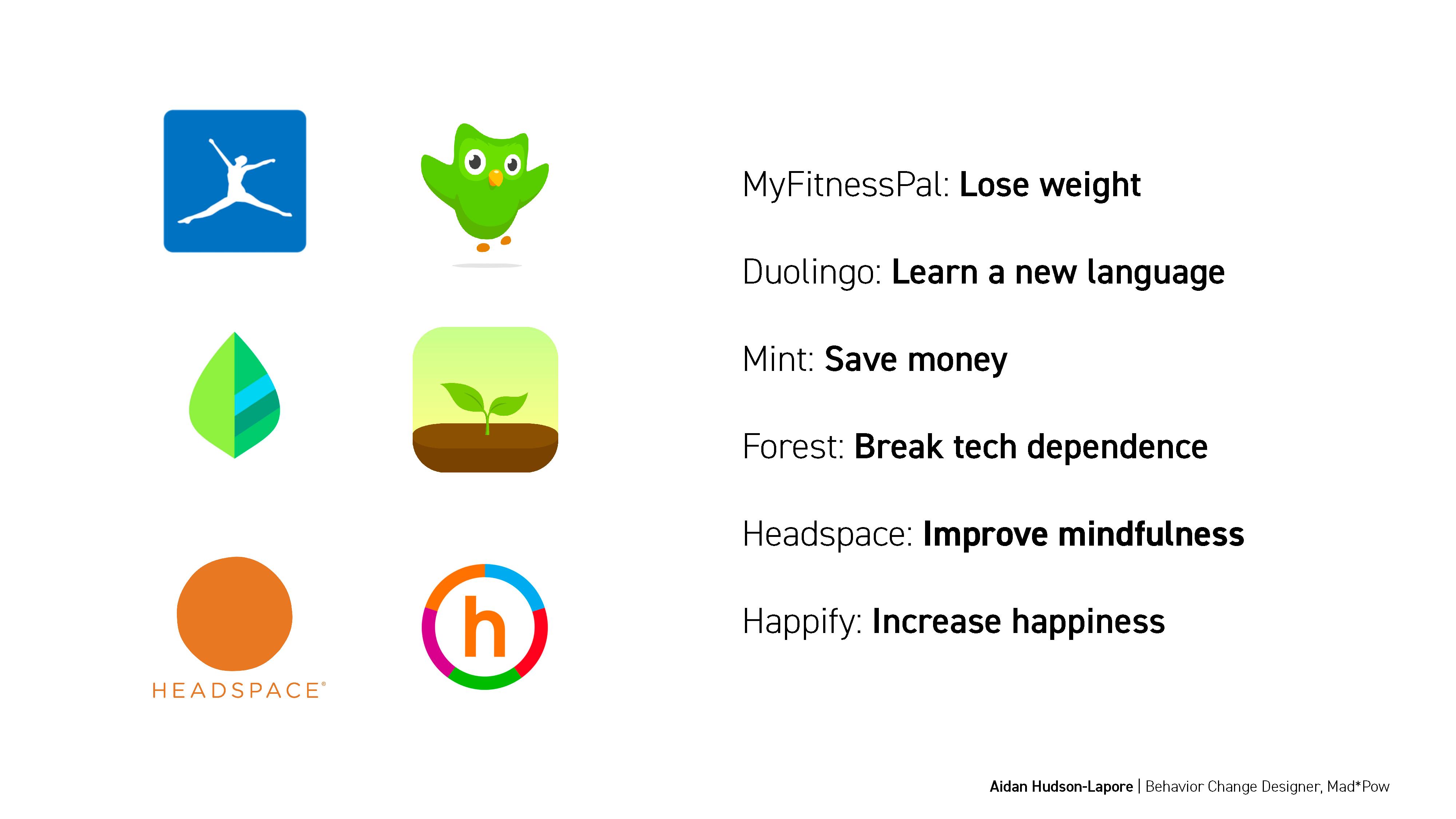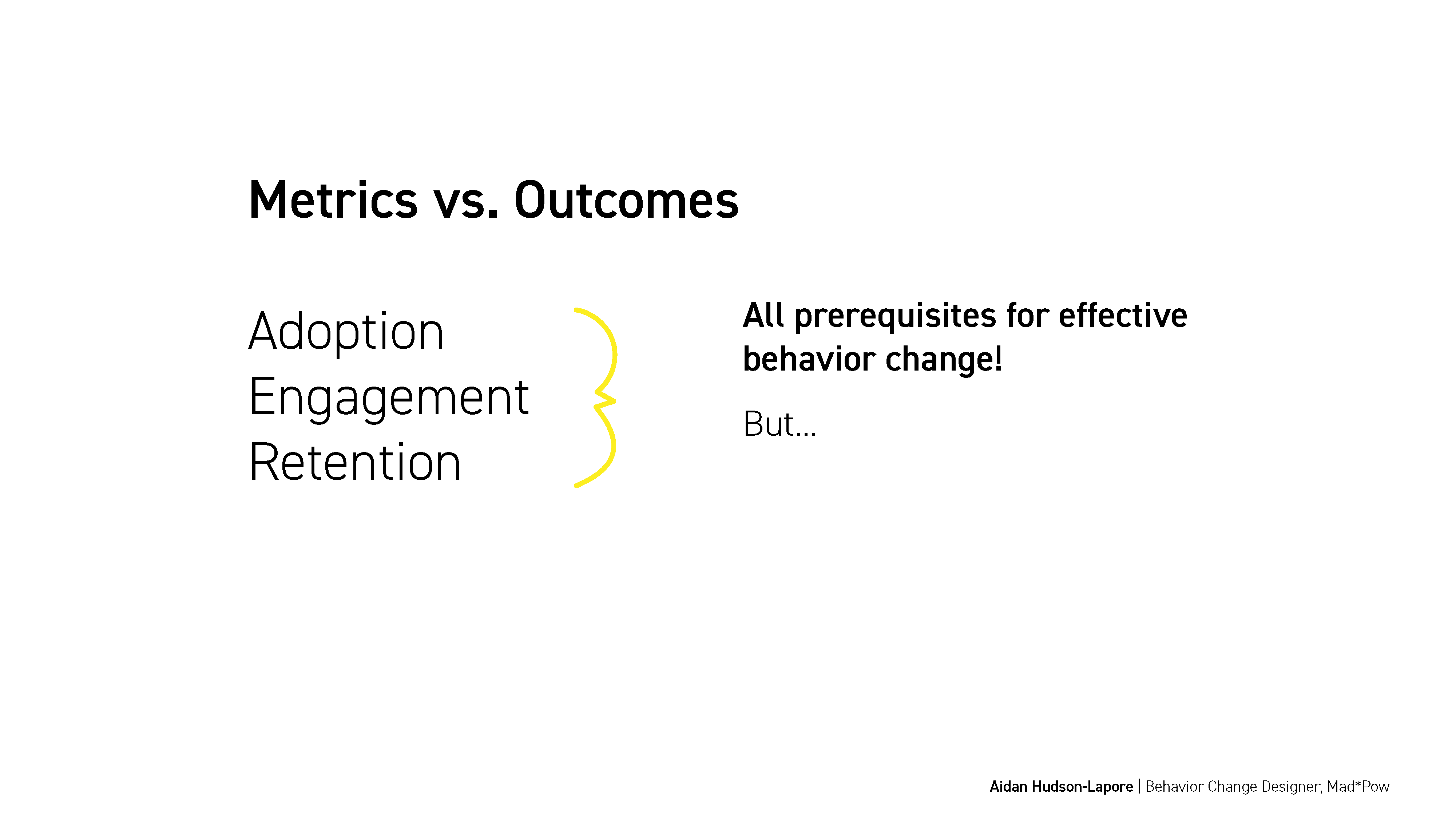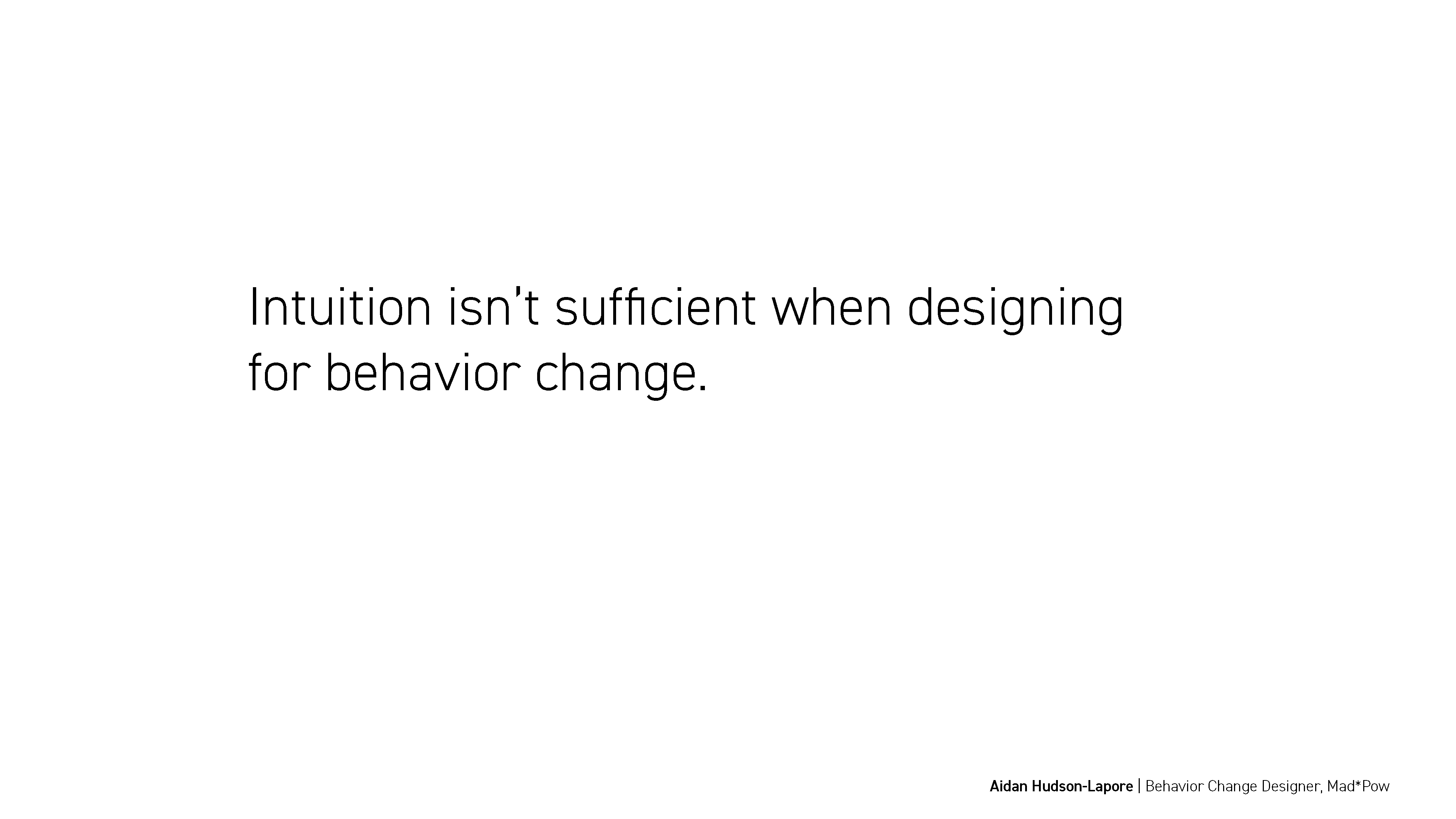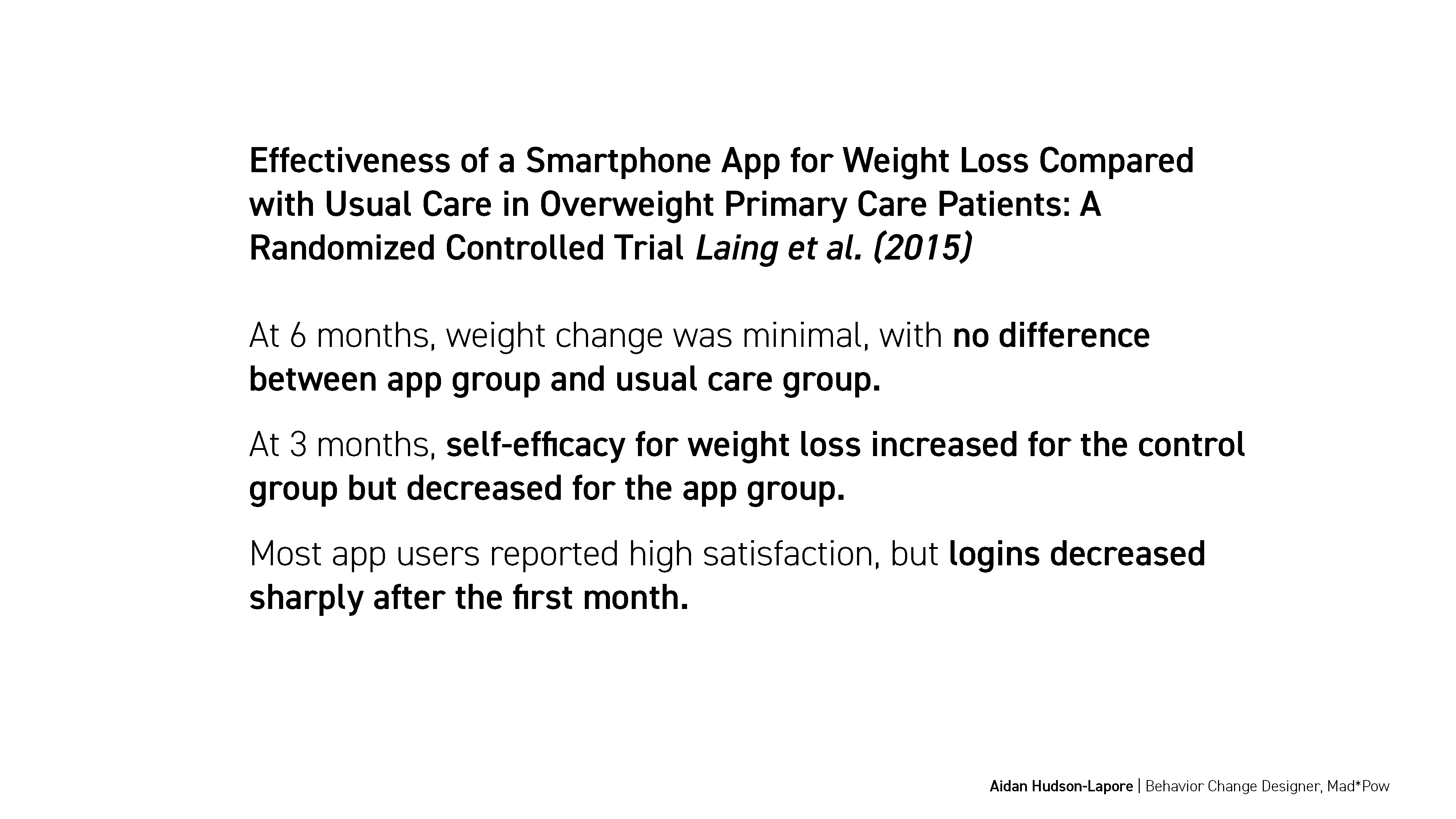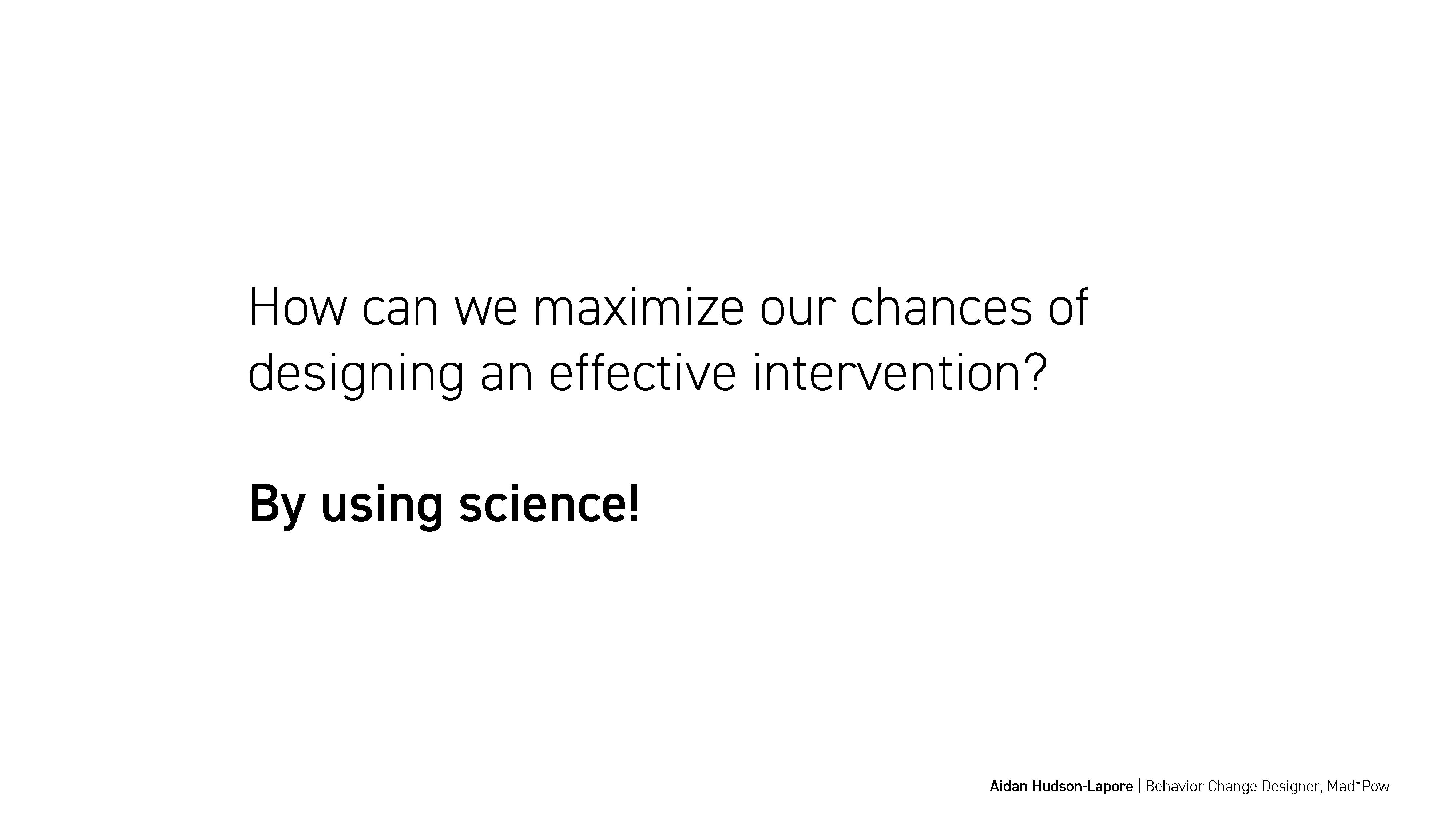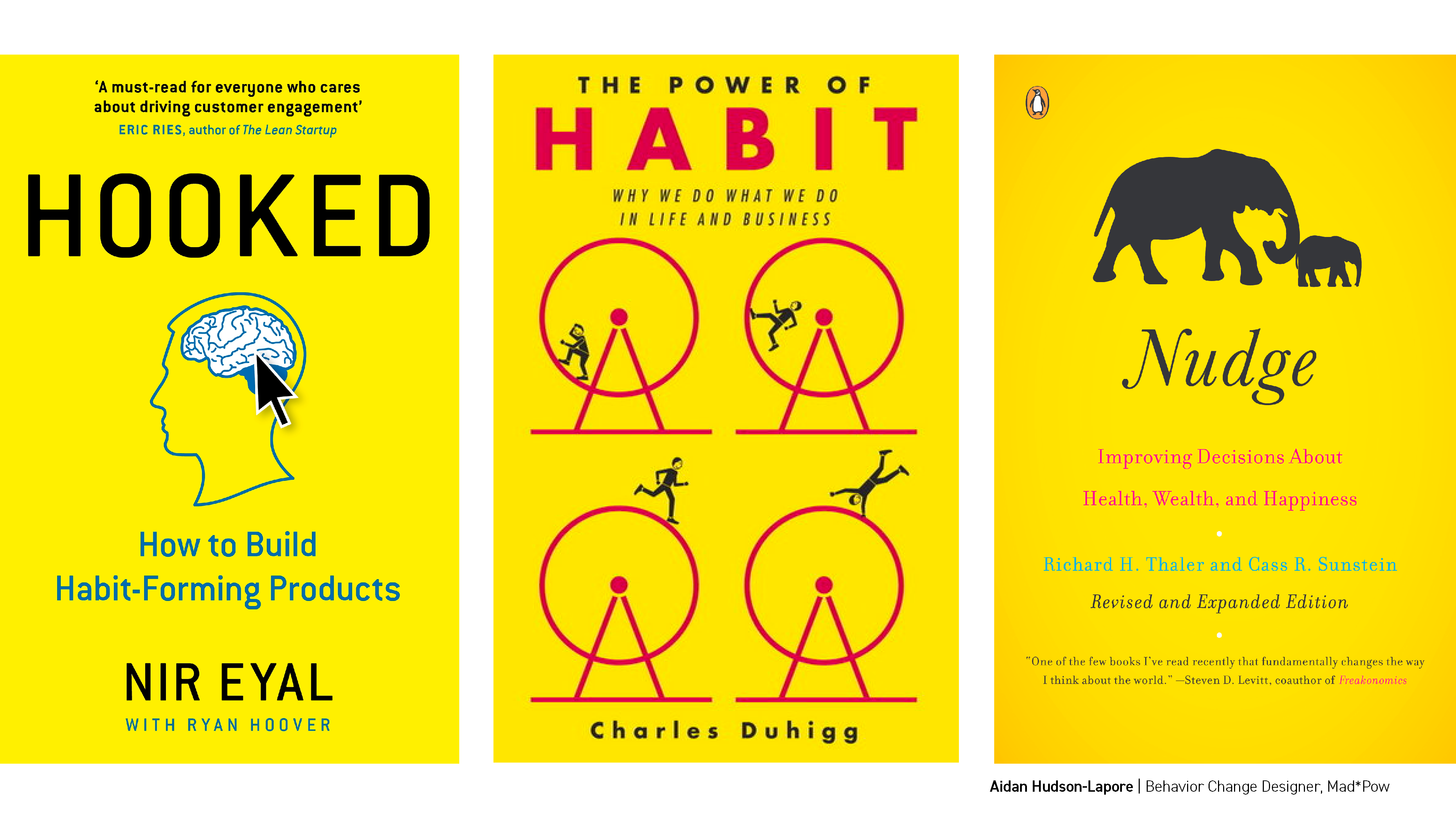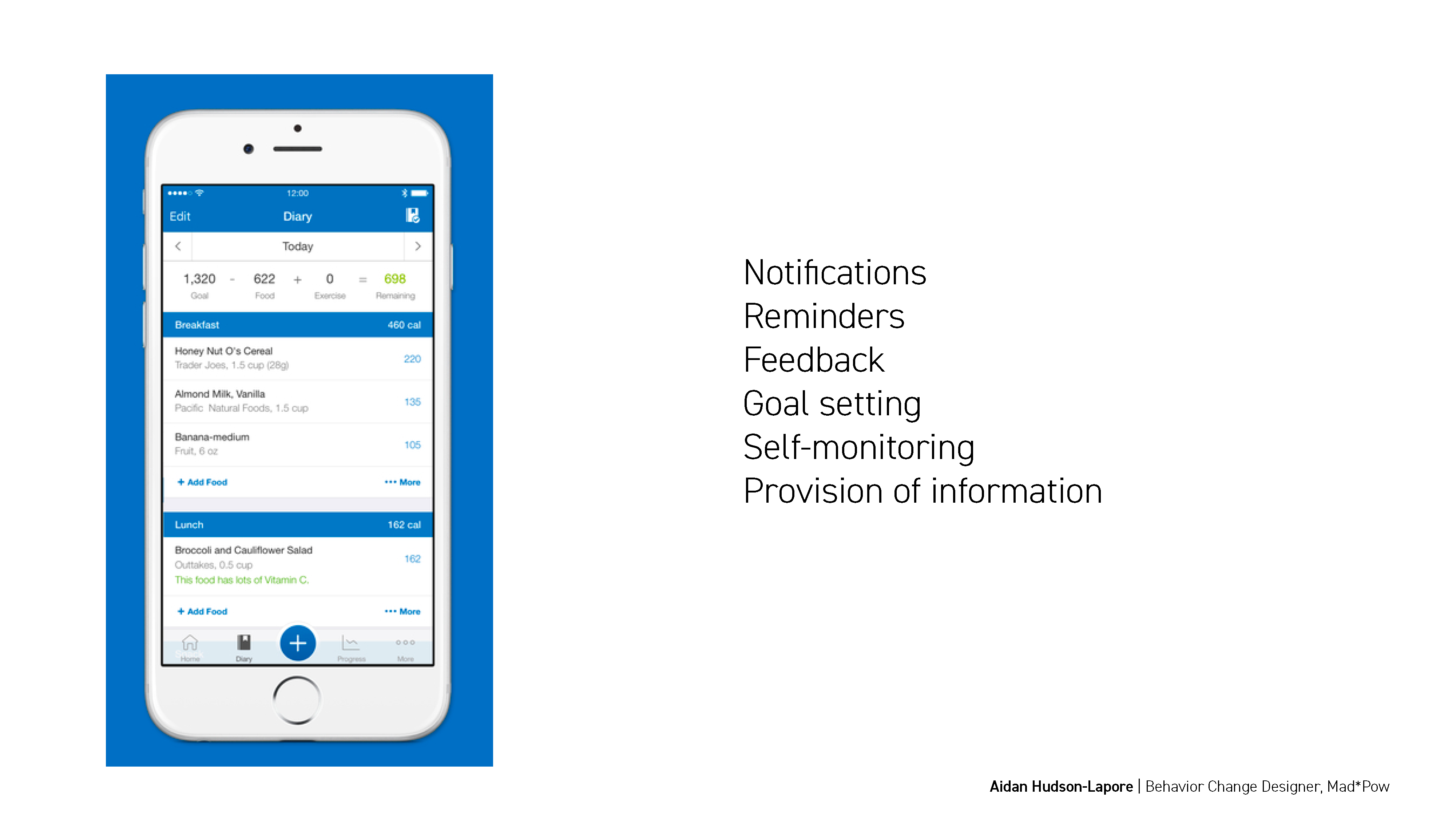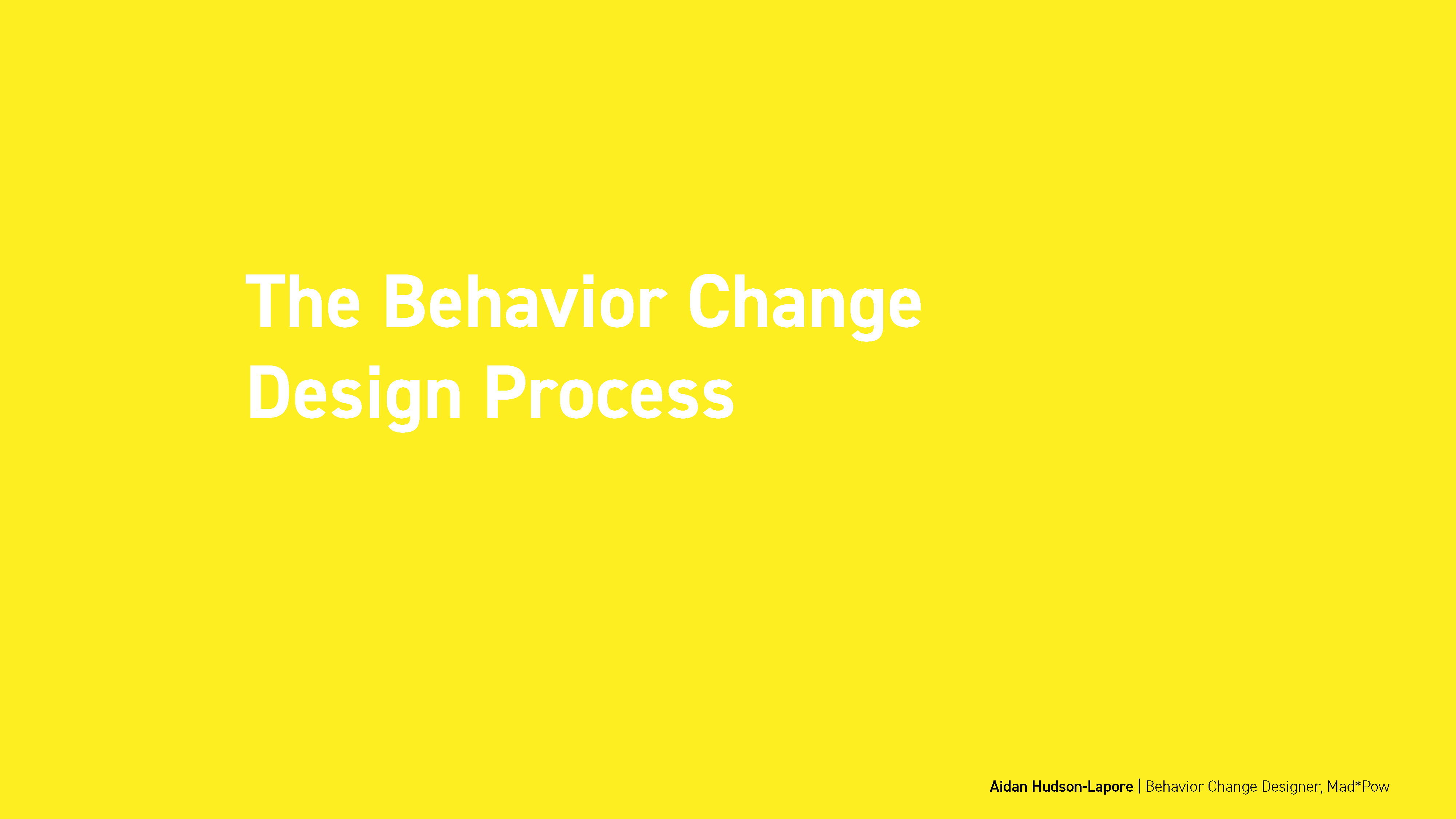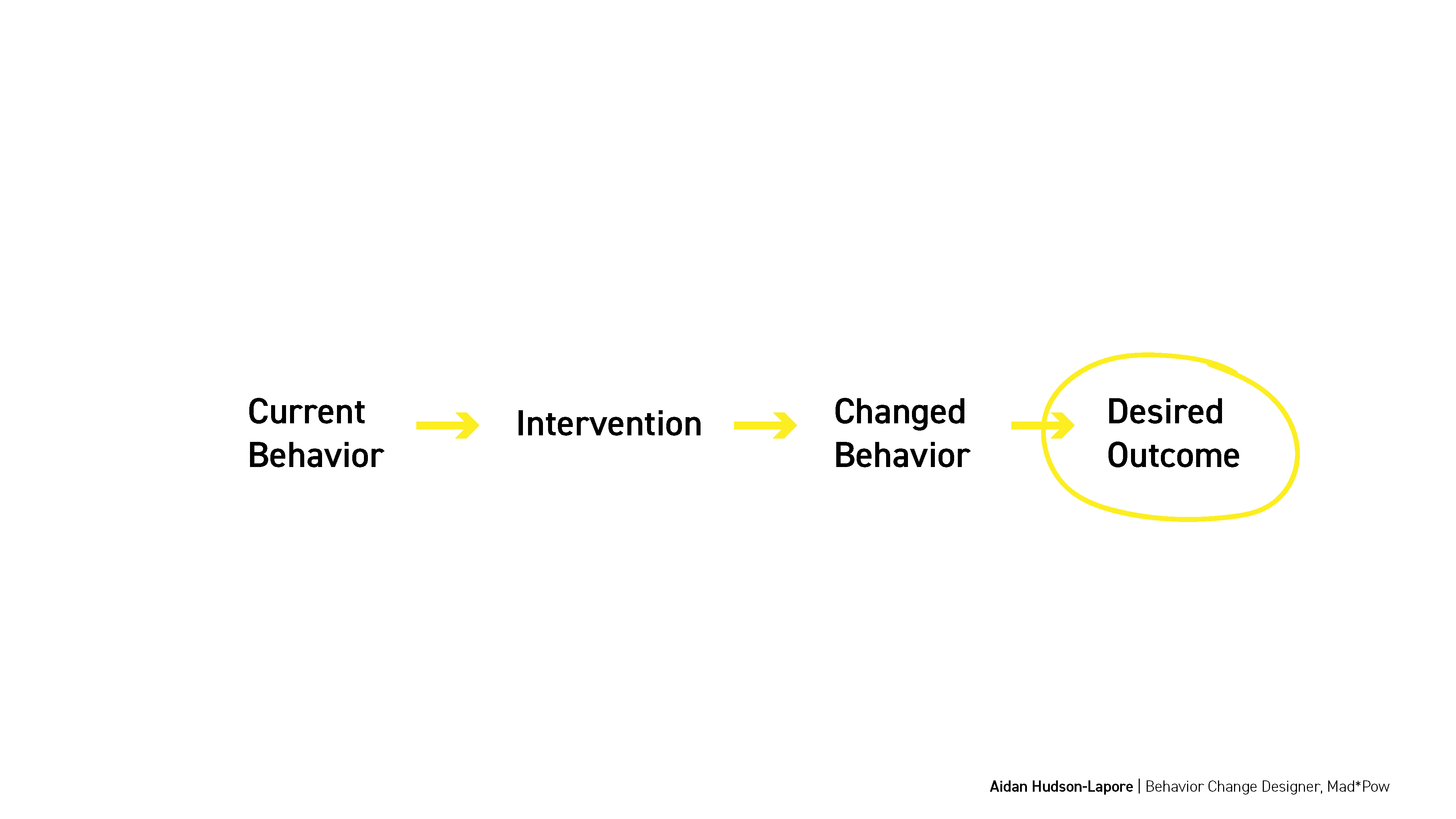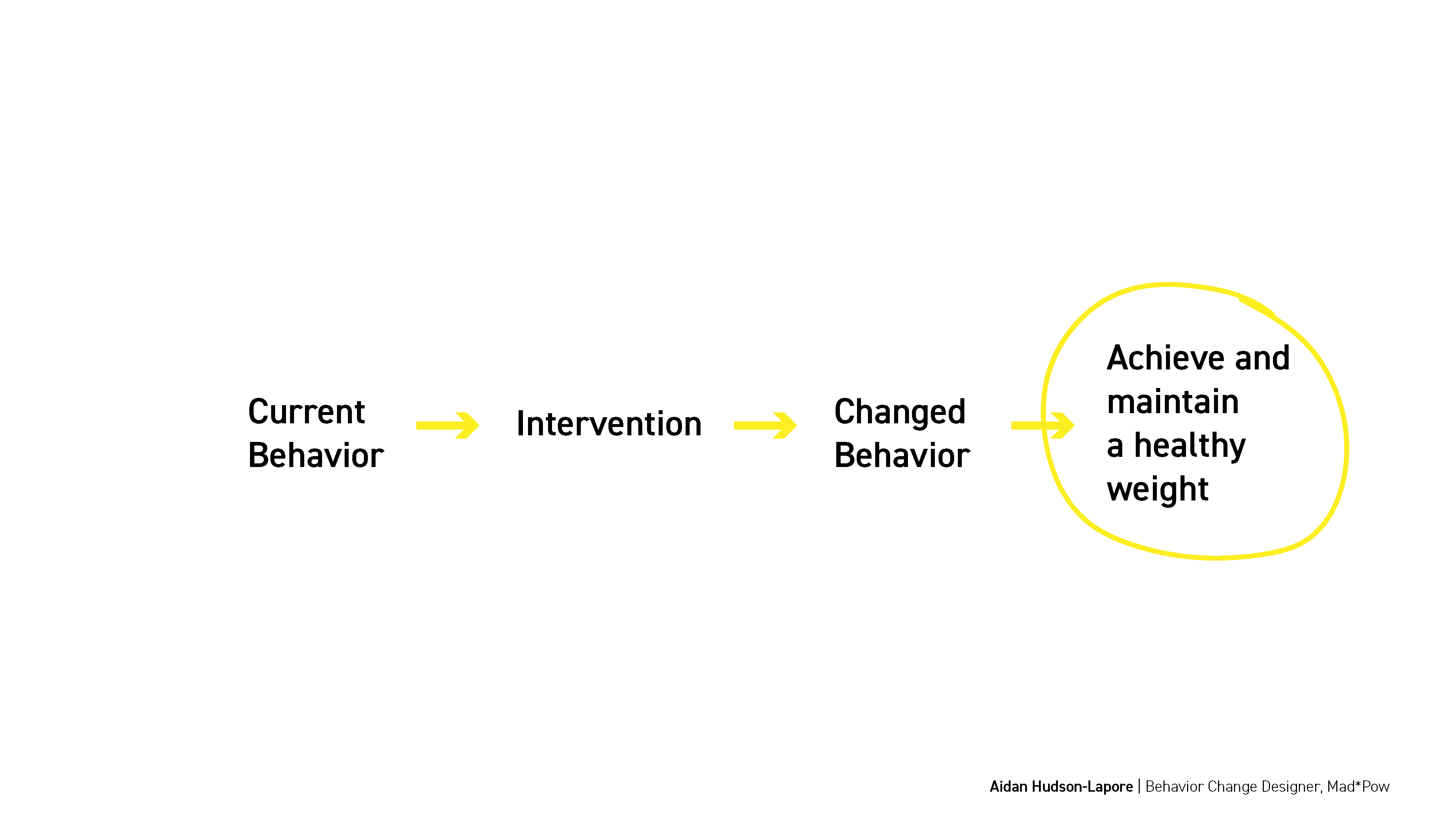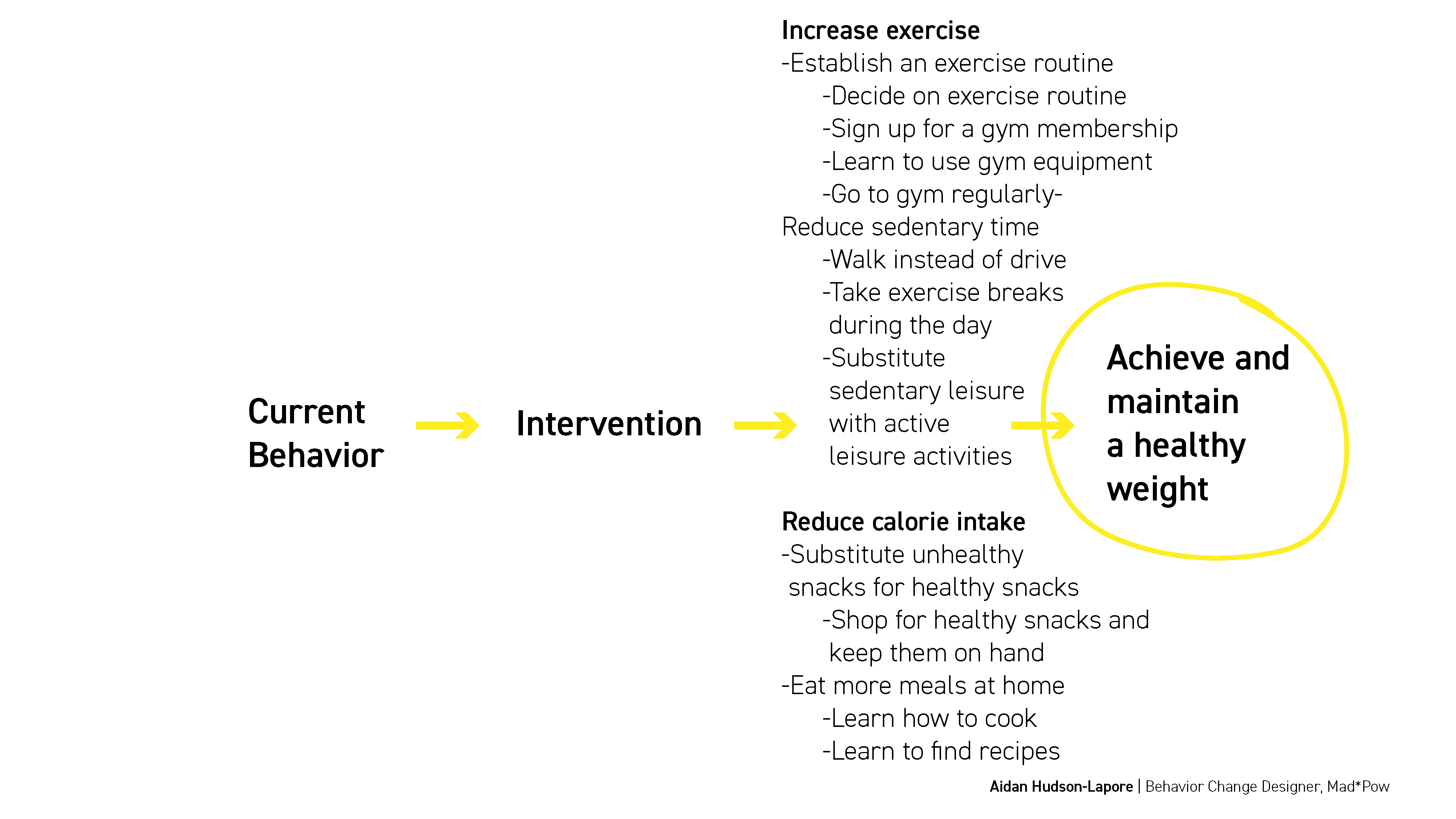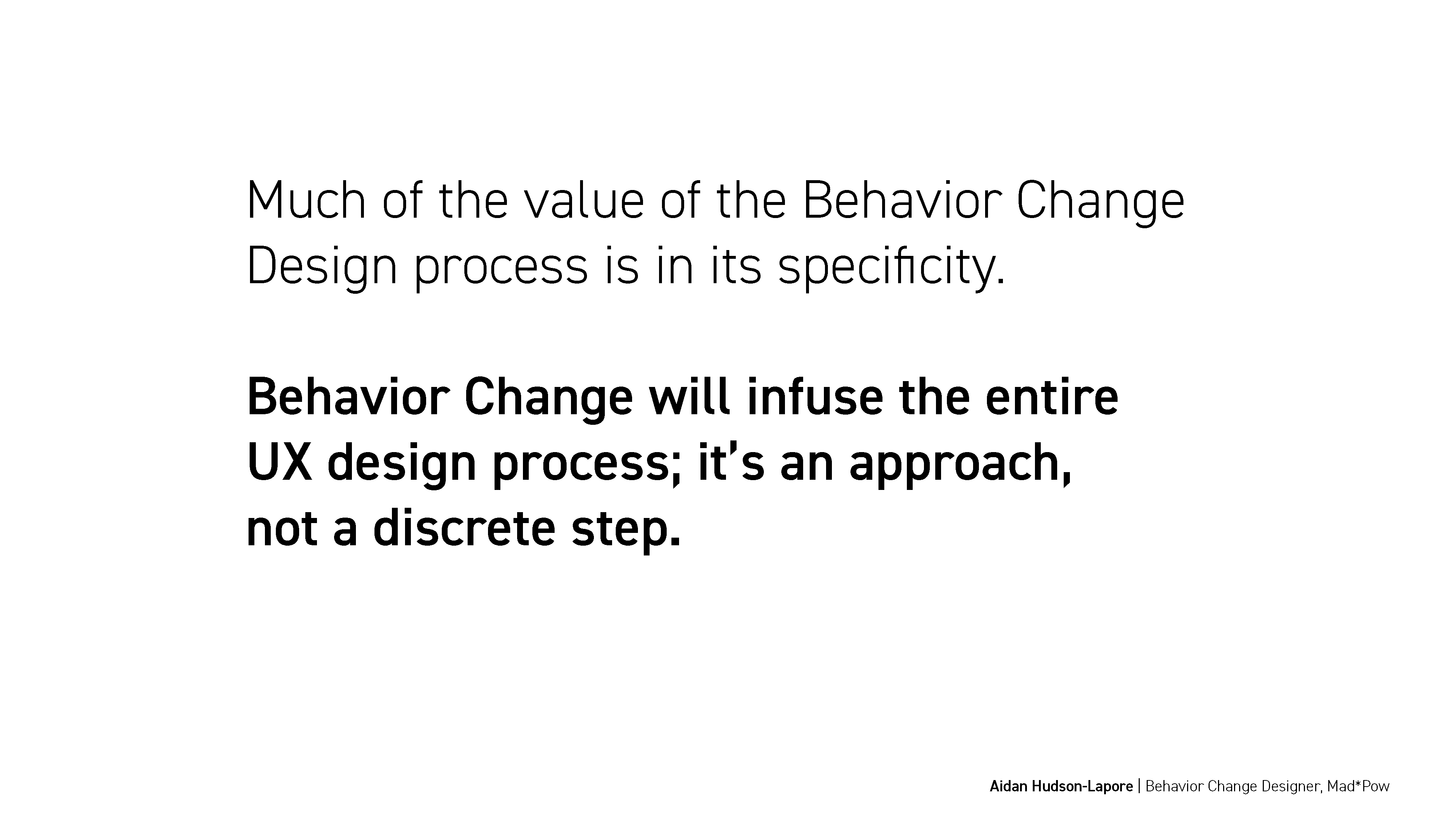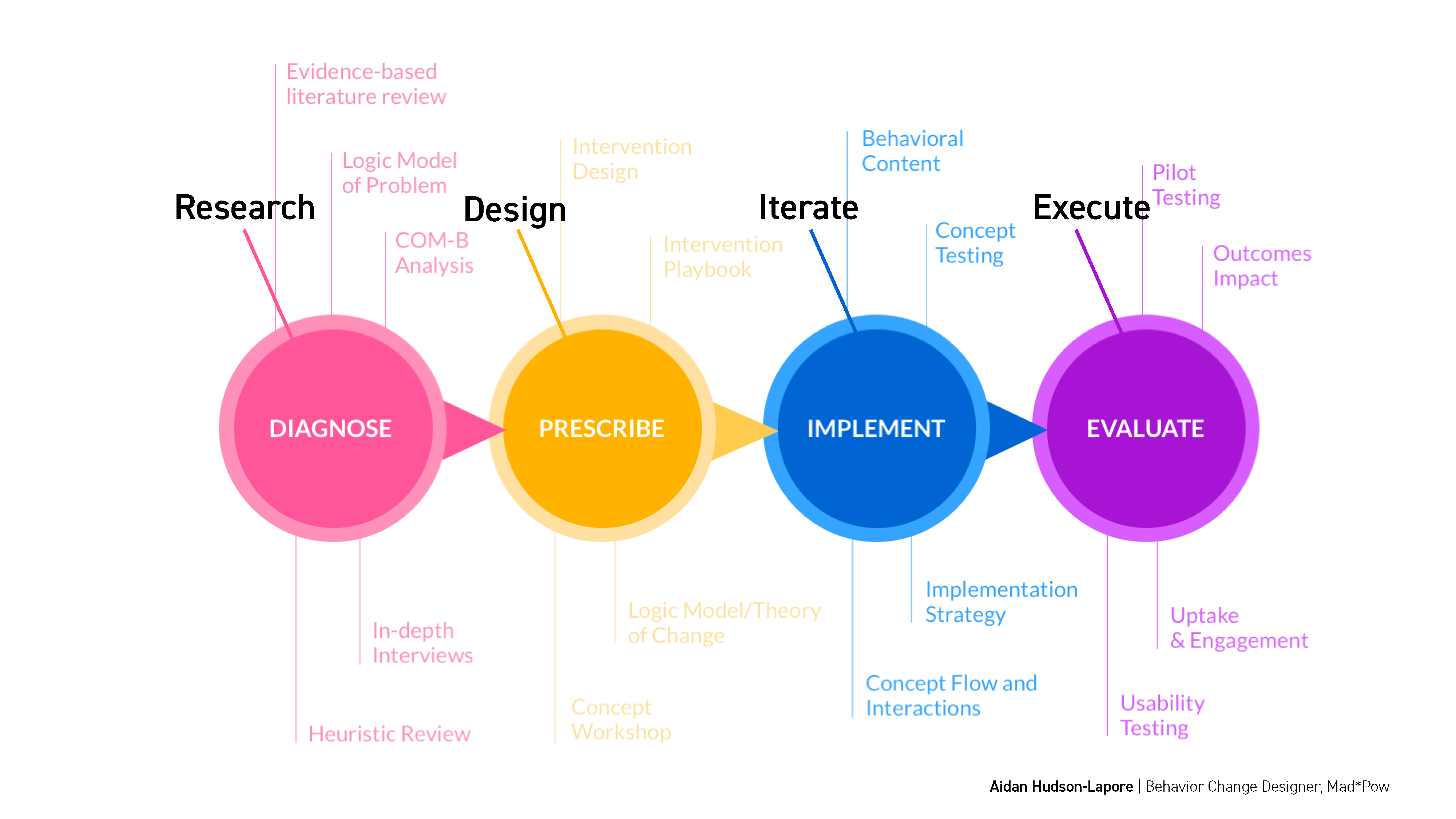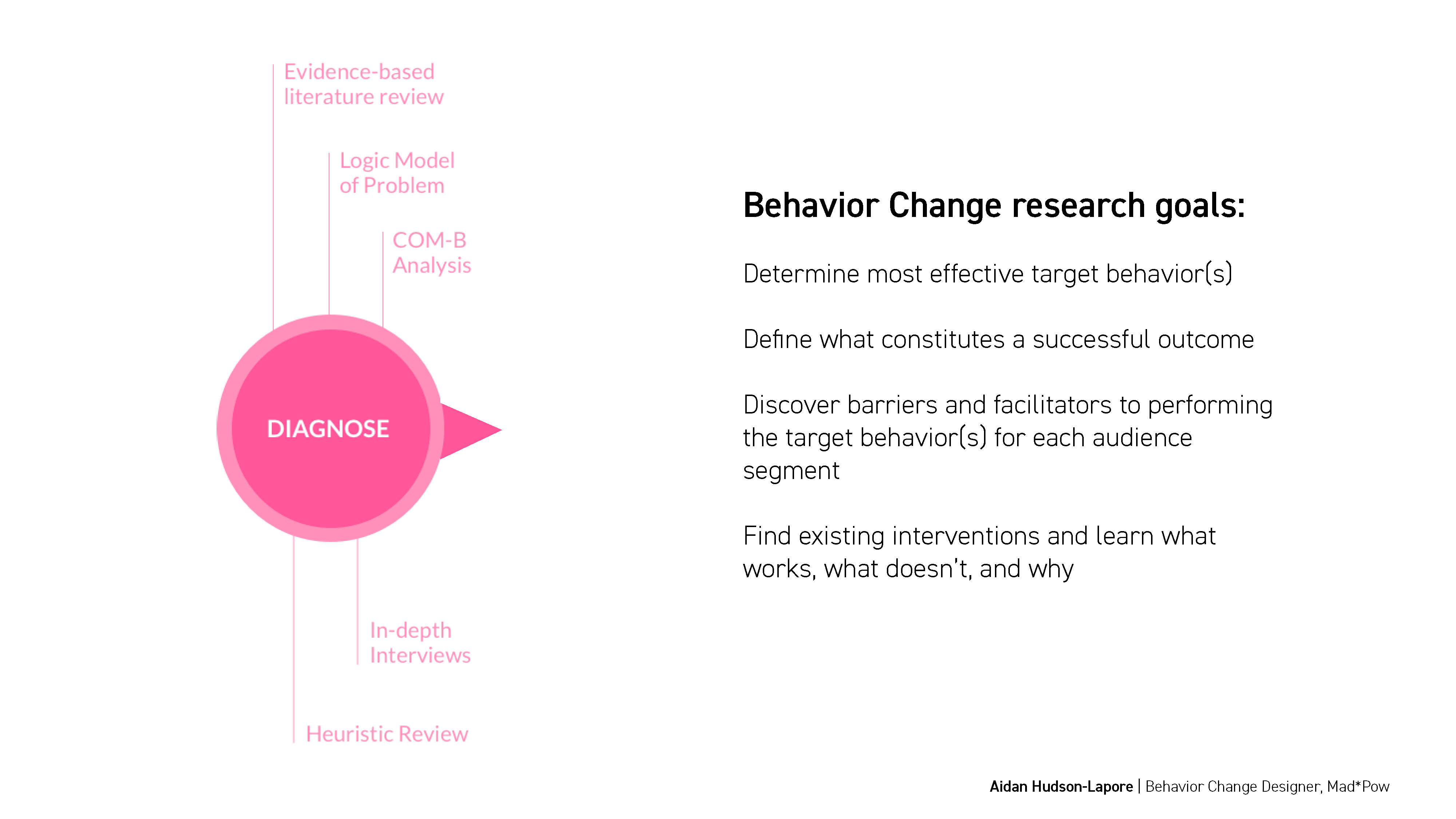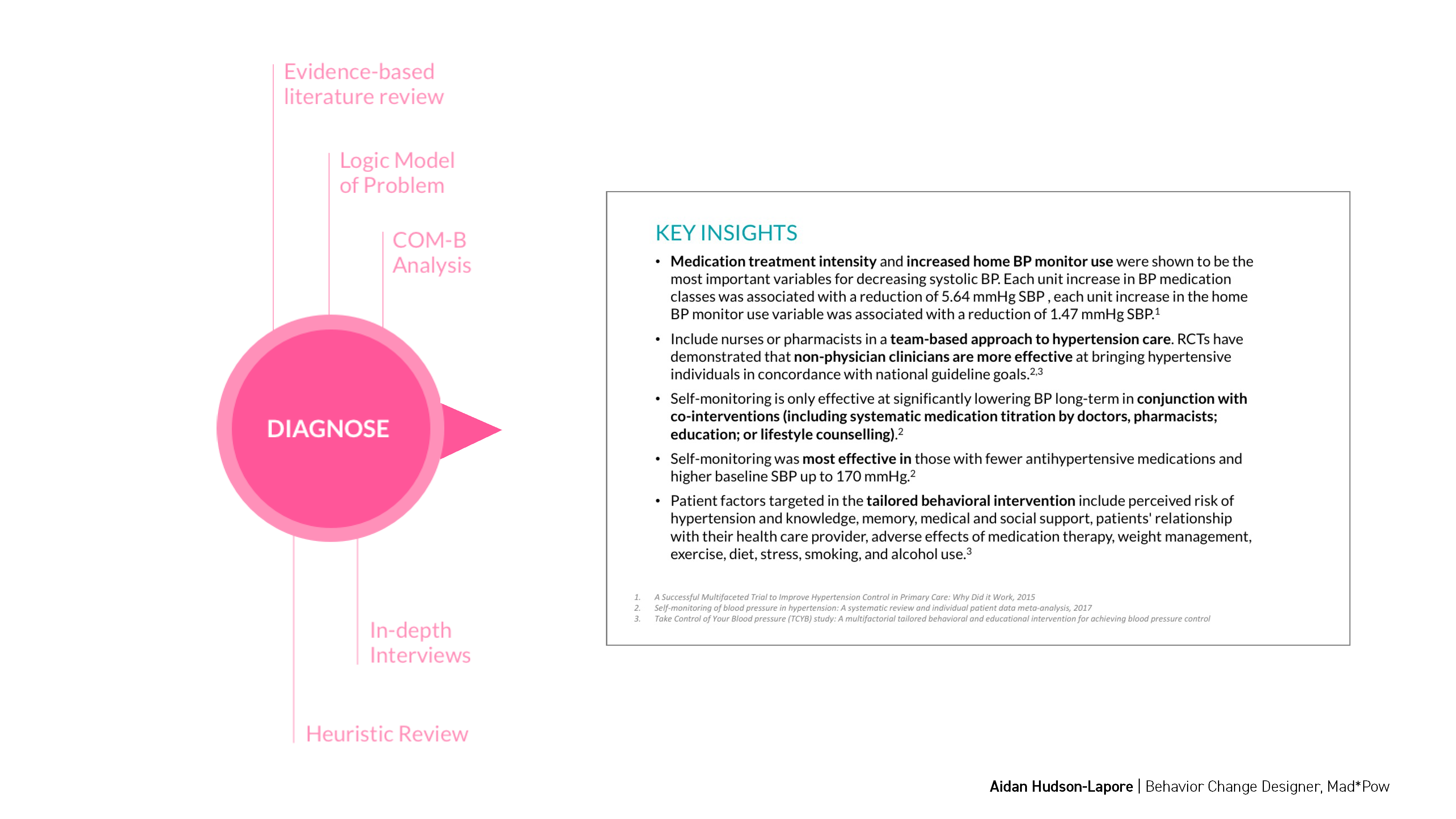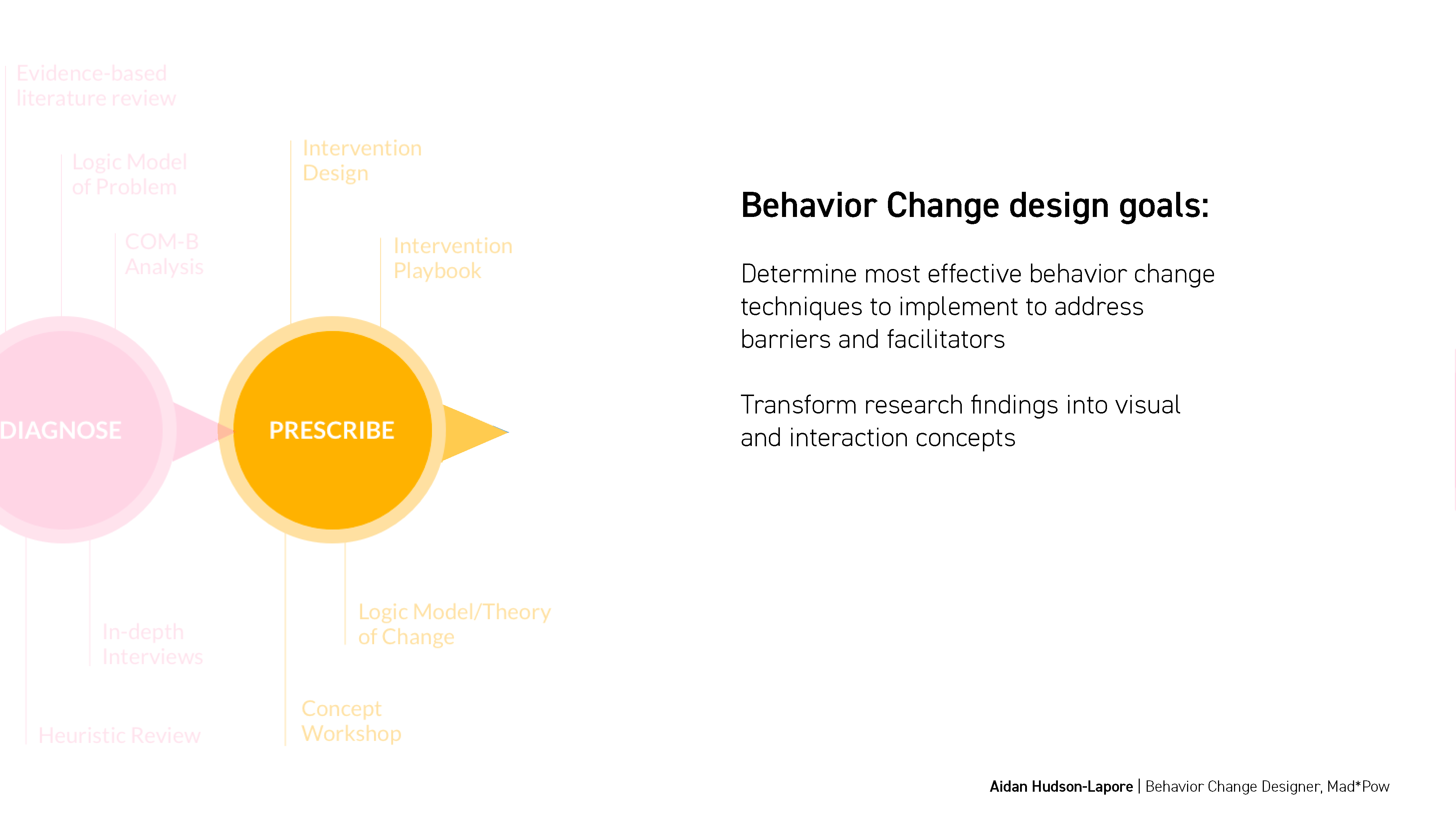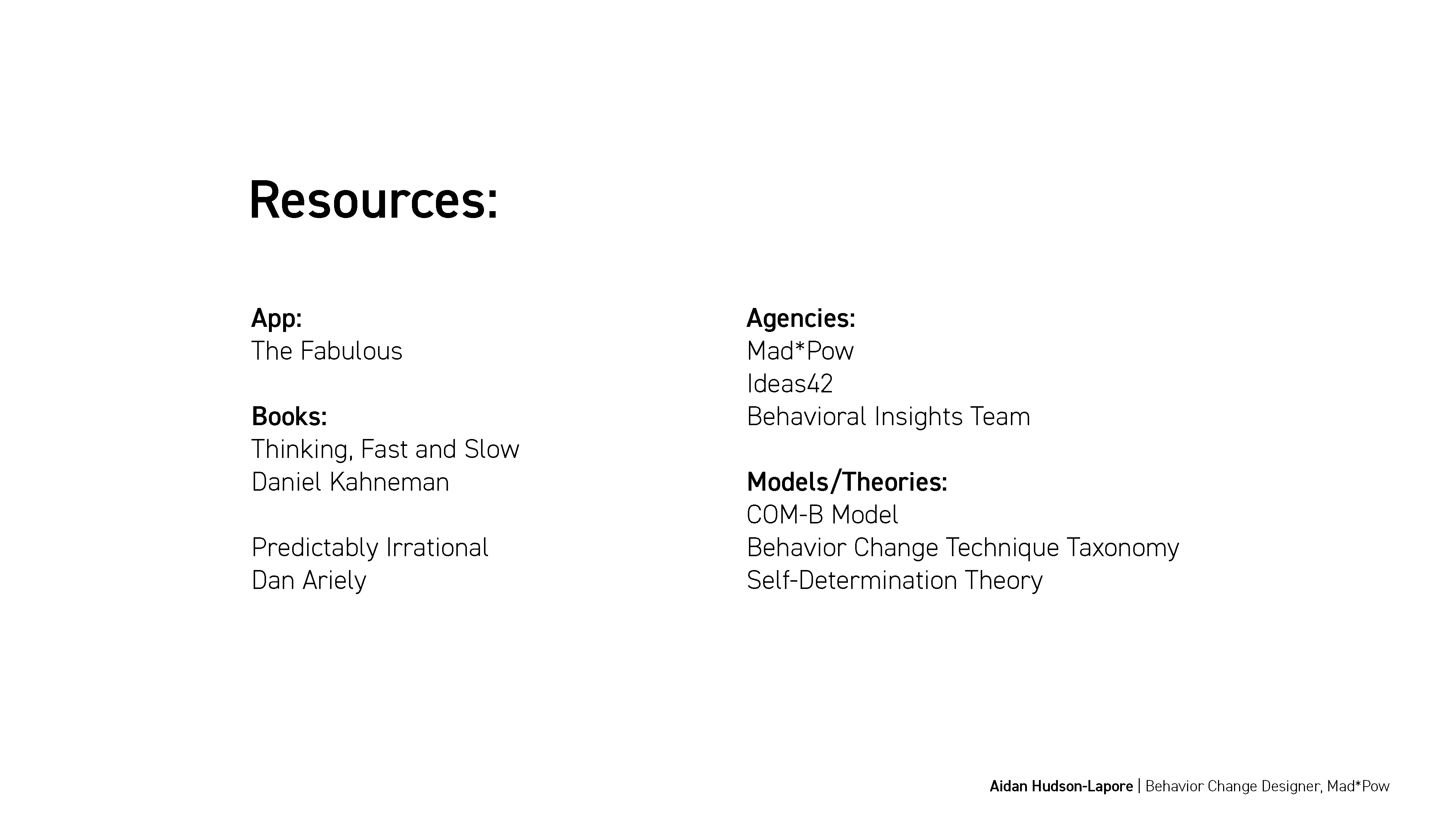Behavior Change Design Primer: Teaching UX students the fundamentals of behavior change design
Client: General Assembly | Role: Teaching and presentation design | Year: 2018
Abstract
This guest lecture on behavior change design for Boston’s General Assembly User Experience Design Course served as students’ introduction to behavior change design.
I embedded activities to give students a chance to work through key concepts in behavior change design, including selecting desired outcomes of the intervention, prioritizing target behaviors, and identifying barriers to behavior change.
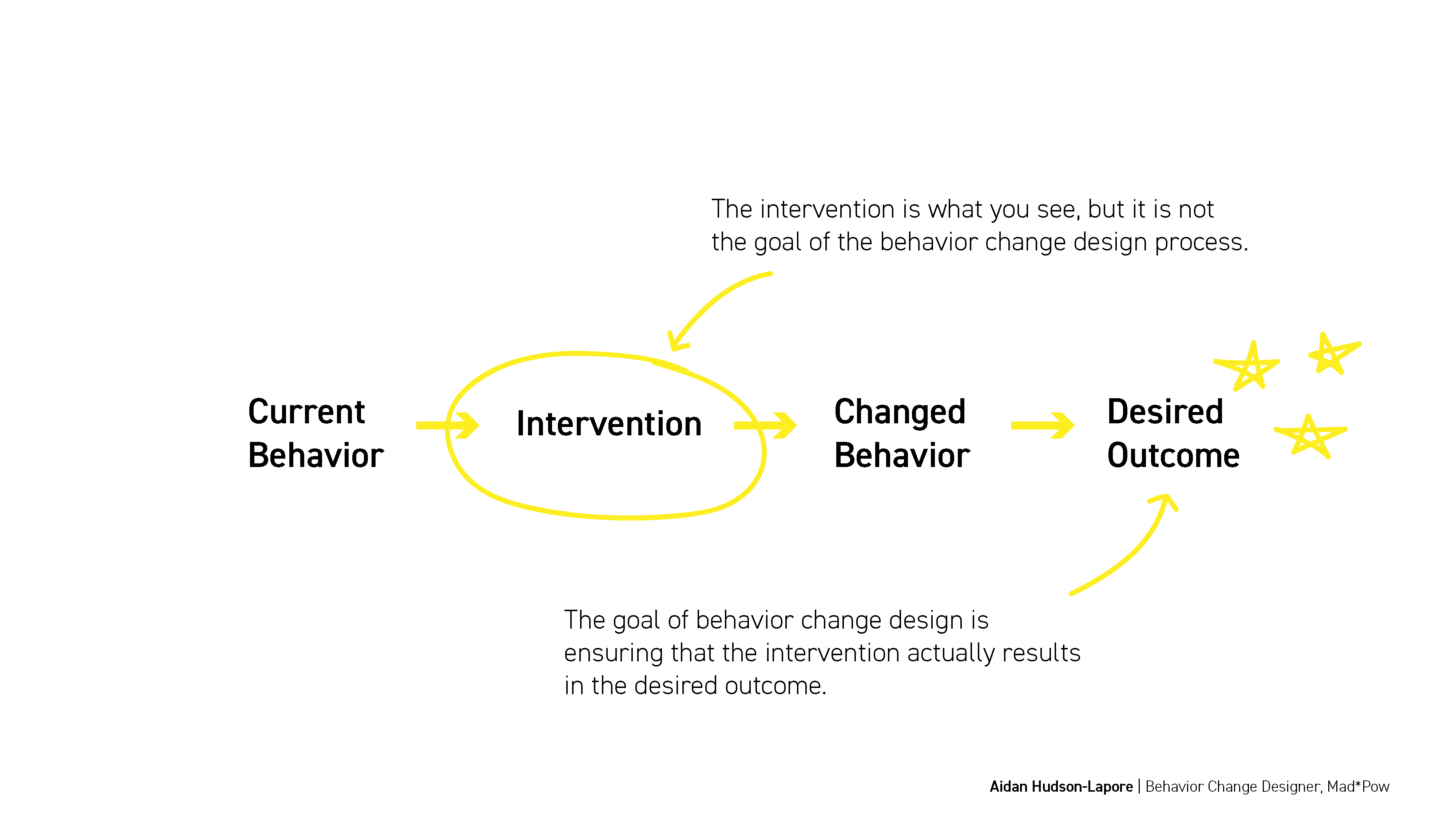
Presentation details
Slide excerpts
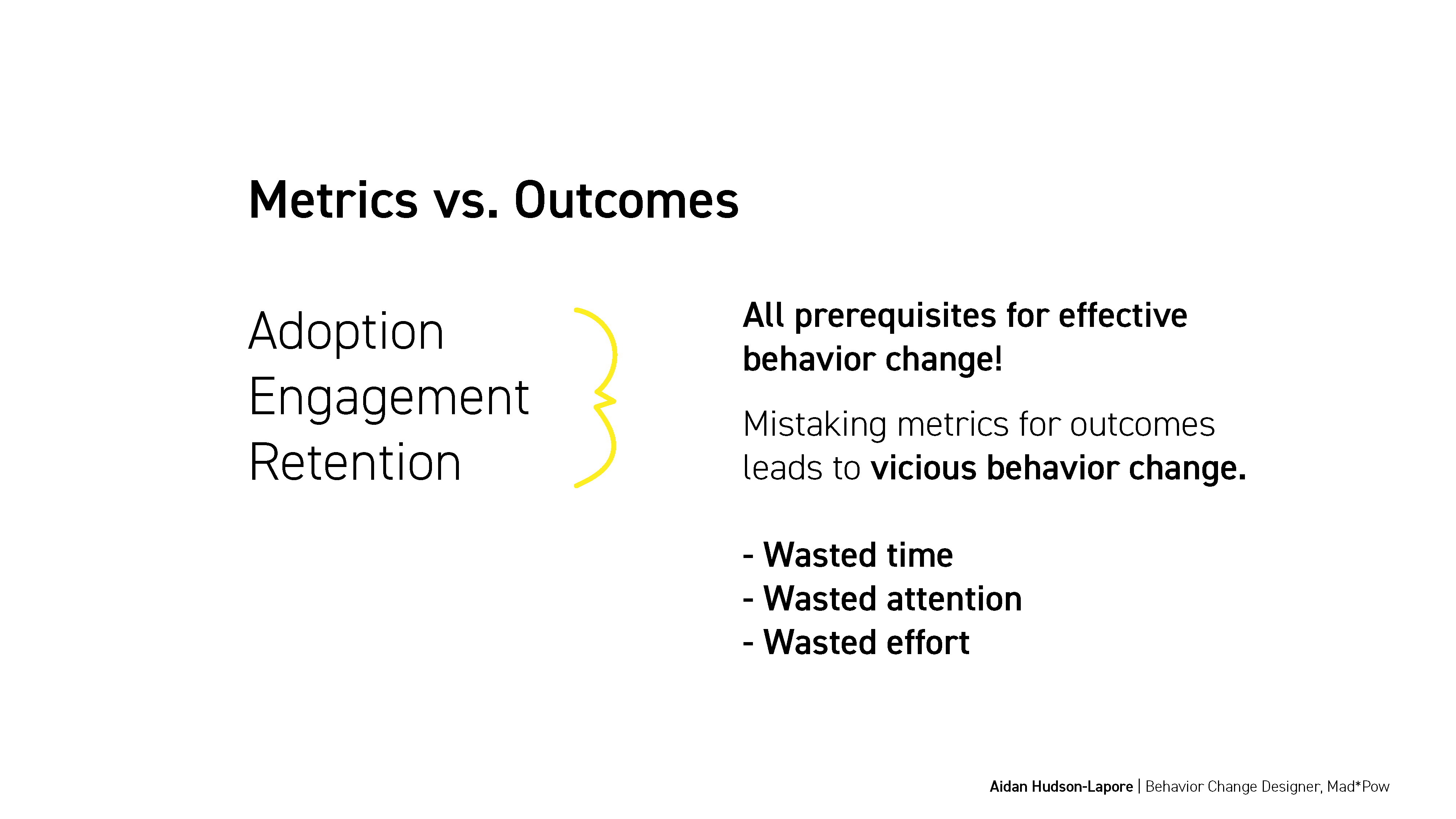

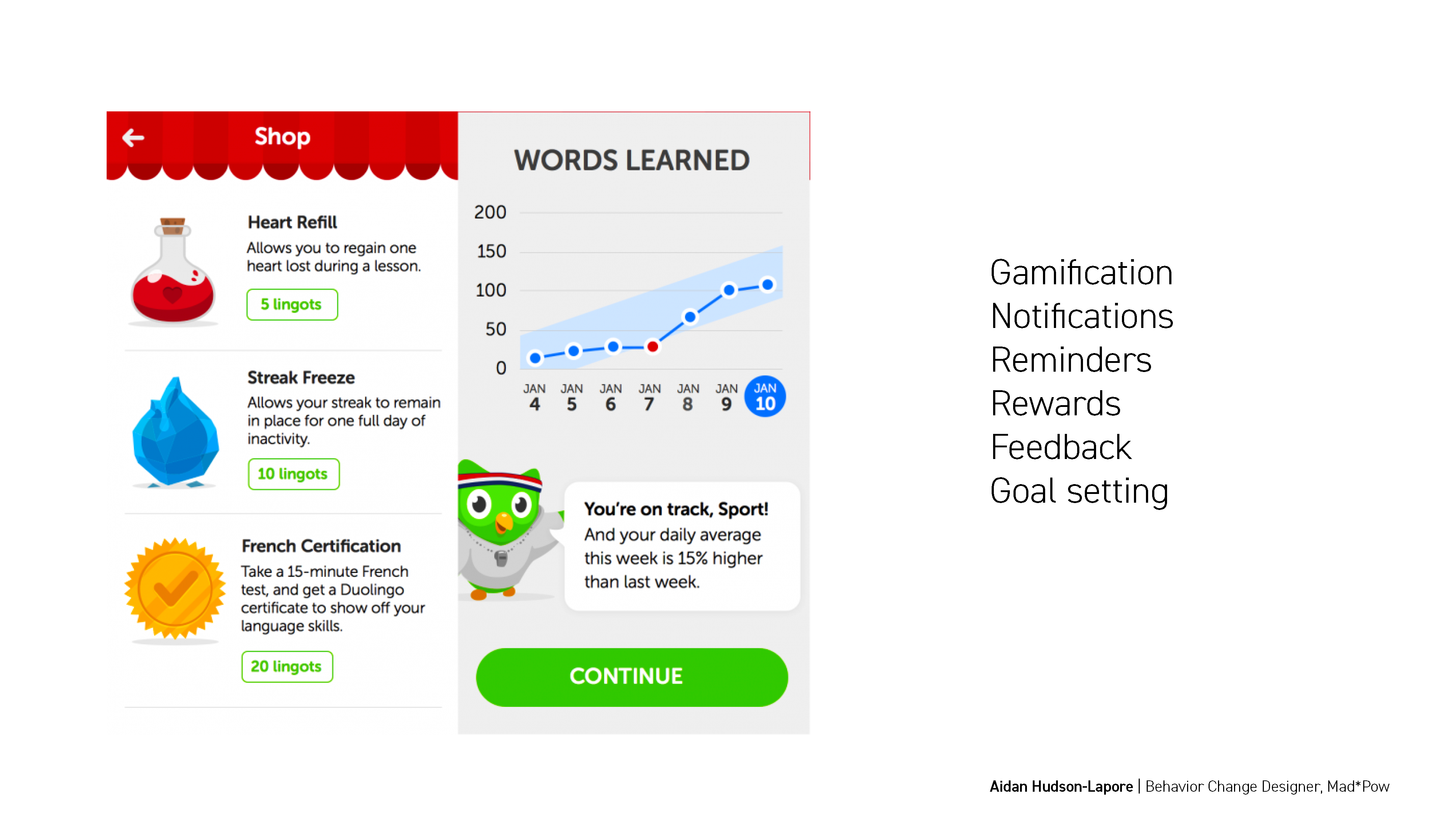
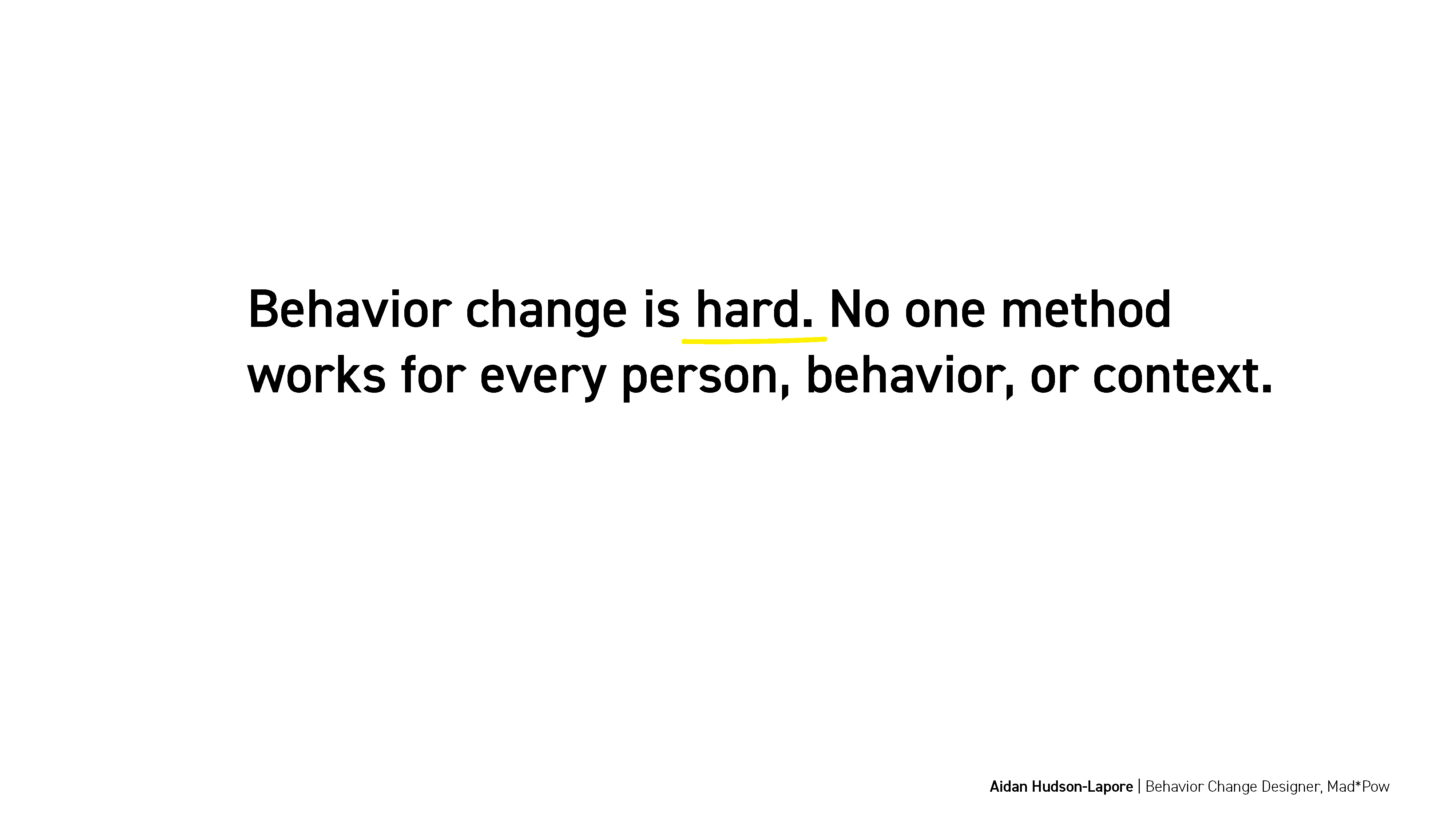
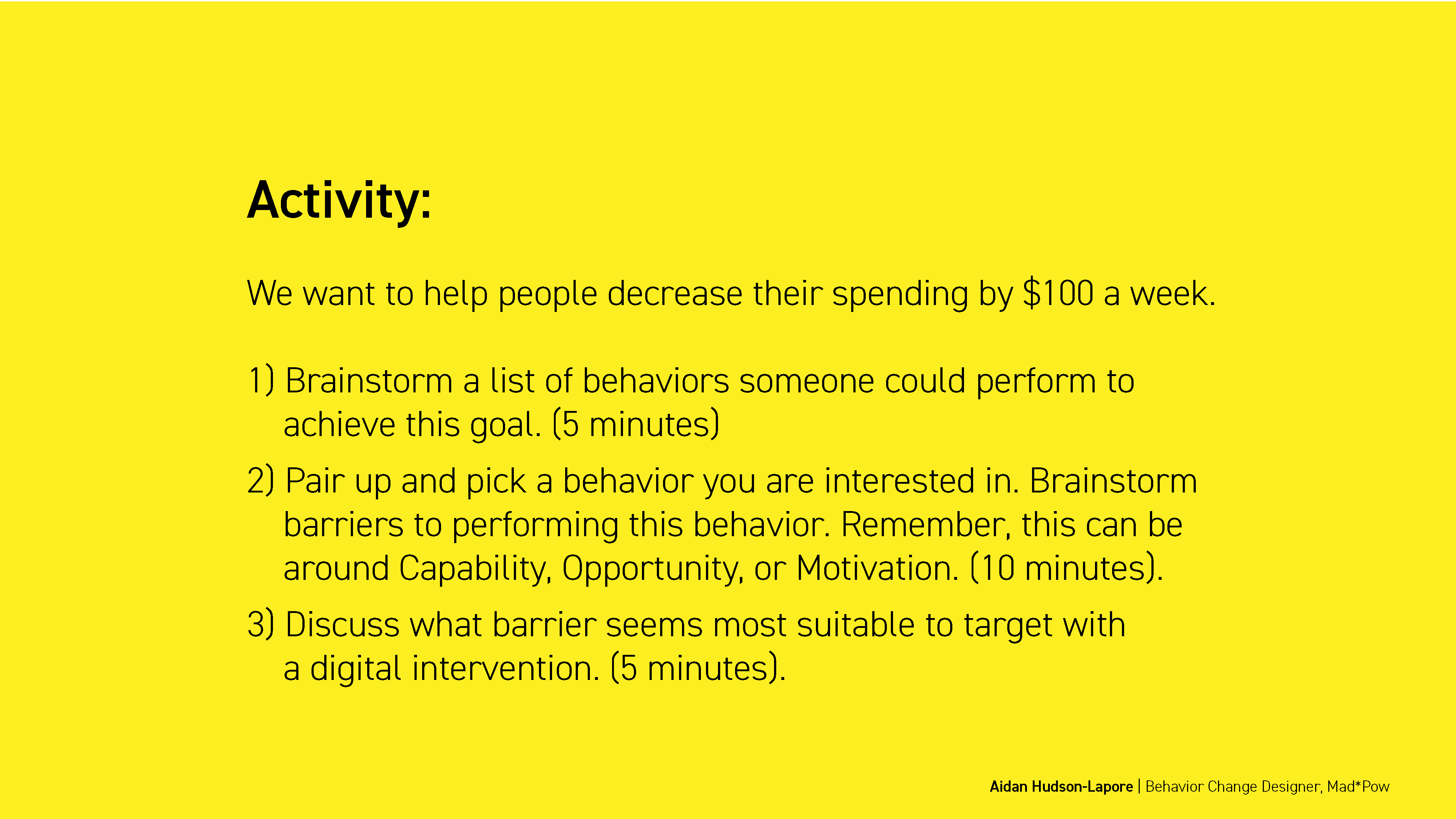

Presentation description
Individual behavior is central to addressing many social challenges, from health to sustainability to equity. Designers often use objects, products, or services to try to change people’s behavior for the better, through educational campaigns, fitness trackers, or meditation apps, to name a few examples. However, these designs often don’t produce the intended results, especially in the complex systems that contribute to social impact challenges.
Behavior change design is an approach that integrates scientific evidence with traditional design methods to increase the chances that the final design will result in meaningful, measurable changes in behavior and positive outcomes. In this lecture, you’ll learn the central concepts of behavior change design, common misconceptions about behavior change and “nudging”, and what types of projects most benefit from a behavior change approach.
Click the image below to view the full presentation (58 sides).


